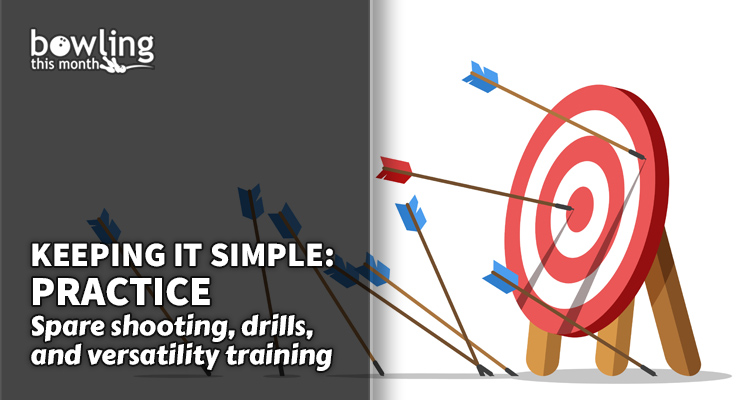Article Contents
- 1. What’s your commitment level?
- 1.1. A variable approach
- 2. Keeping it simple
- 2.1. Getting started with spares
- 2.2. The one-step drill
- 2.3. Ball motion and versatility training
- 3. Just walk
- 4. Final thoughts
Note: This article is only available to Bowling This Month subscribers.
Yep, another practice article. How exciting! It might not be glamorous, but practice is the foundation of a solid bowling game.
Before we dive into a simple practice session routine that will keep you sharp, we must have an honest discussion—with ourselves—about expectations. I have this same conversation when giving lessons because bowlers need to be realistic. The approach is much different with someone committing three to five hours per week versus someone who commits just the 10 minutes of warm-up before league each week. Lessons can be catered around both, but it’s important to match your expectations to your practice reality. This is especially true when you are paying a qualified coach for their valuable time, so you both don’t end up frustrated.
What’s your commitment level?
For example, let’s say you and your coach really want to change your armswing or footwork. You bowl two nights a week, but you don’t have time to practice, due to family, work, etc. This is perfectly fine, but you simply aren’t going to be able to fix your swing or footwork; there isn’t enough time and it’s impossible to make these changes when playing for score. At least, you can’t do it without giving up some pins along the way. In this instance, the focus should be on things you can change without giving up competitive focus. This could be things like layouts, your starting position on the approach, your ball height in the stance, etc. Focus on changing things that require one conscious thought or placement, and then the focus goes back to the task at hand. Essentially, these are things that don’t require much feel or conscious awareness during the ...
Already a premium member? Click here to log in.


 (Only
(Only 